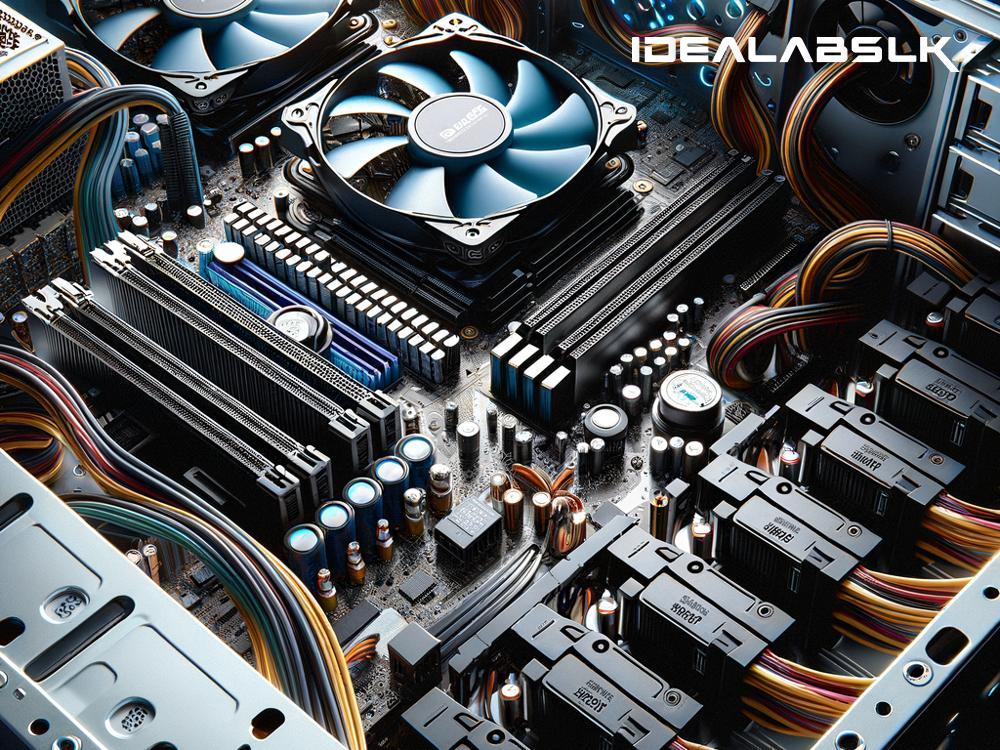How to Resolve 'PC Doesn't Detect Secondary Hard Drive' Issue
Have you ever added a secondary hard drive to your computer for extra storage or backup purposes, only to find that your PC doesn't seem to recognize it? This can be a puzzling and frustrating issue, but don't worry; it's a common problem with several straightforward solutions. In this blog, we'll guide you through the steps to help your computer recognize your secondary hard drive.
Check Your Connections
The first step is always to check the most basic elements—your connections. It's easy to overlook, but sometimes the problem is as simple as a cable that's not properly connected.
- Power Off Your Computer: Start by turning off your computer and unplugging it from the power source to ensure safety.
- Open Your PC Case: You'll need to access the inside of your computer. If you're unsure how to do this, consult your PC's manual or look up a guide online specific to your model.
- Check the SATA Cable: Ensure the SATA cable (the cable that connects your hard drive to the motherboard) is securely connected at both ends.
- Check the Power Connection: Make sure the power cable from the power supply to your hard drive is firmly connected.
After checking these connections, power on your computer to see if the drive is now recognized. If not, let's move on to the next step.
Initialize Your Hard Drive
If your secondary hard drive is new, you might need to initialize it before your computer can recognize it. Here's how you can do that:
- Open Disk Management: Press the Windows Key + X and select 'Disk Management'. This will open a window showing all the hard drives connected to your computer.
- Find Your Hard Drive: Look for a drive labeled as "Disk 0," "Disk 1," etc., with a black bar indicating it's unallocated.
- Initialize the Drive: Right-click on the unallocated space and select 'Initialize Disk'. You'll be prompted to choose between MBR (Master Boot Record) or GPT (GUID Partition Table). For most users, MBR is fine, unless the disk is over 2TB, in which case you'll need to select GPT.
- Create a New Volume: After initializing, right-click on the now allocated space and select 'New Simple Volume'. Follow the on-screen wizard to format the drive and assign it a letter.
Update or Reinstall Drivers
Sometimes, the issue could be related to outdated or corrupted device drivers. To fix this:
- Open Device Manager: Press the Windows Key + X and select Device Manager.
- Find Disk Drives: Expand the 'Disk drives' section, find your secondary hard drive, right-click on it, and select 'Update driver'.
- Search Automatically: Choose to 'Search automatically for updated driver software'. If there's an update, it will install automatically.
If updating doesn't work, try reinstalling the driver by right-clicking on the hard drive in Device Manager and selecting 'Uninstall device'. Then, restart your computer. Windows will attempt to reinstall the driver during the boot-up process.
Check BIOS/UEFI Settings
If the above methods don't work, your computer's BIOS or UEFI settings might not be configured correctly to detect the hard drive:
- Restart and Enter BIOS/UEFI: The method to enter BIOS/UEFI varies by PC. Usually, you'll need to press a key like F2, Del, or Esc right after you start your computer. Look up the exact key for your specific PC model.
- Detect Hard Drive in BIOS/UEFI: Look for a section related to storage or hard drives and check if your secondary hard drive is listed. If it's not, try loading default settings or look for an option to detect new hardware.
Consider Hardware Issues
If none of the above solutions work, there could be an issue with the hard drive itself or the SATA port on your motherboard:
- Try connecting the hard drive to a different SATA port on your motherboard.
- Test the hard drive on another computer to see if it's recognized. If it isn't, the hard drive might be faulty.
Conclusion
Not being able to access a secondary hard drive can be distressing, especially if it's meant to expand your storage capacity or serve as a backup. However, by methodically going through these troubleshooting steps, you’re likely to solve the problem. Whether it's a simple connection issue, needing initialization, driver updates, BIOS/UEFI settings adjustment, or identifying hardware issues, there's usually a solution. If you do end up with a hardware failure, remember that the data recovery might still be possible, so don't lose hope. Stay calm, and you'll find your way through it.

